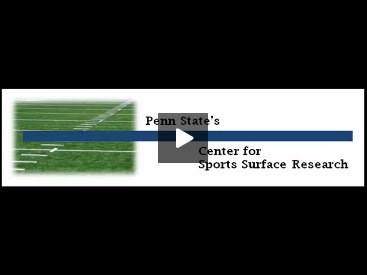Synthetic Turf Fiber Wear Test - Progress Report
This progress report shows the effects of mechanical wear on various brands of synthetic turf fibers (Read It Here)
Want Your Synthetic Turf Field Tested for Wear-Resistance?
Penn State's Center for Sports Surface Research is offering a few lucky facilities the opportunity to have a sample of their new field tested for upright fiber wear resistance. The data will be compiled in an online database and be available to the public.
If you are installing a new field at your facility and would like to be considered for our testing, all you have to do is email us at fibertesting@psu.edu. You will also be required to collect a sample at your facility and mail it to us. Unfortunately, we don't have the resources to test all fields being installed but plan to test several of each and every monofilament and slit-film product being installed in today's market place. We plan to test several samples from each available product each year.
We are now accepting both monofilament and slit-film products. Email us at fibertesting@psu.edu for more details for more detailed information.
Required sample size (carpet only -- no infill): 60" x 30"
(smaller sizes may be acceptable, please email us if you cannot meet the size requirement)
Testing Procedure
Our wear simulator was designed to match similar wear testers commonly used for FIFA testing. Our machine consists of two studded (cleated) rollers. As the rollers move across the surface of the turf, they produce a similar wear pattern to that of cleated shoes worn by field users. Additionally, the rollers move at slightly different speeds, allowing for a sliding movement of one of the rollers. Our model also includes a sample table that moves side-to-side, providing a more even distribution of wear. One complete cycle (down and back) is roughly equivalent to one hour of field use. Our testing is considered a modified version of the European (EN 15306) and FIFA test method as our machine includes plastic cleats with a metal tips instead of 100% plastic cleats. In our testing protocol, we remove random fiber samples prior to wear and at every 10,000 cycle interval up to 30,000 cycles. The extracted fibers are then placed into the categories of 'good', 'hair-splitting', 'fractured' or 'complete splitting'. We also take photographs of the fibers. Results from this testing are only applicable to mechanical wear of fibers and do not take into account ultra-violet light degradation, weathering, or any other form of degradation


